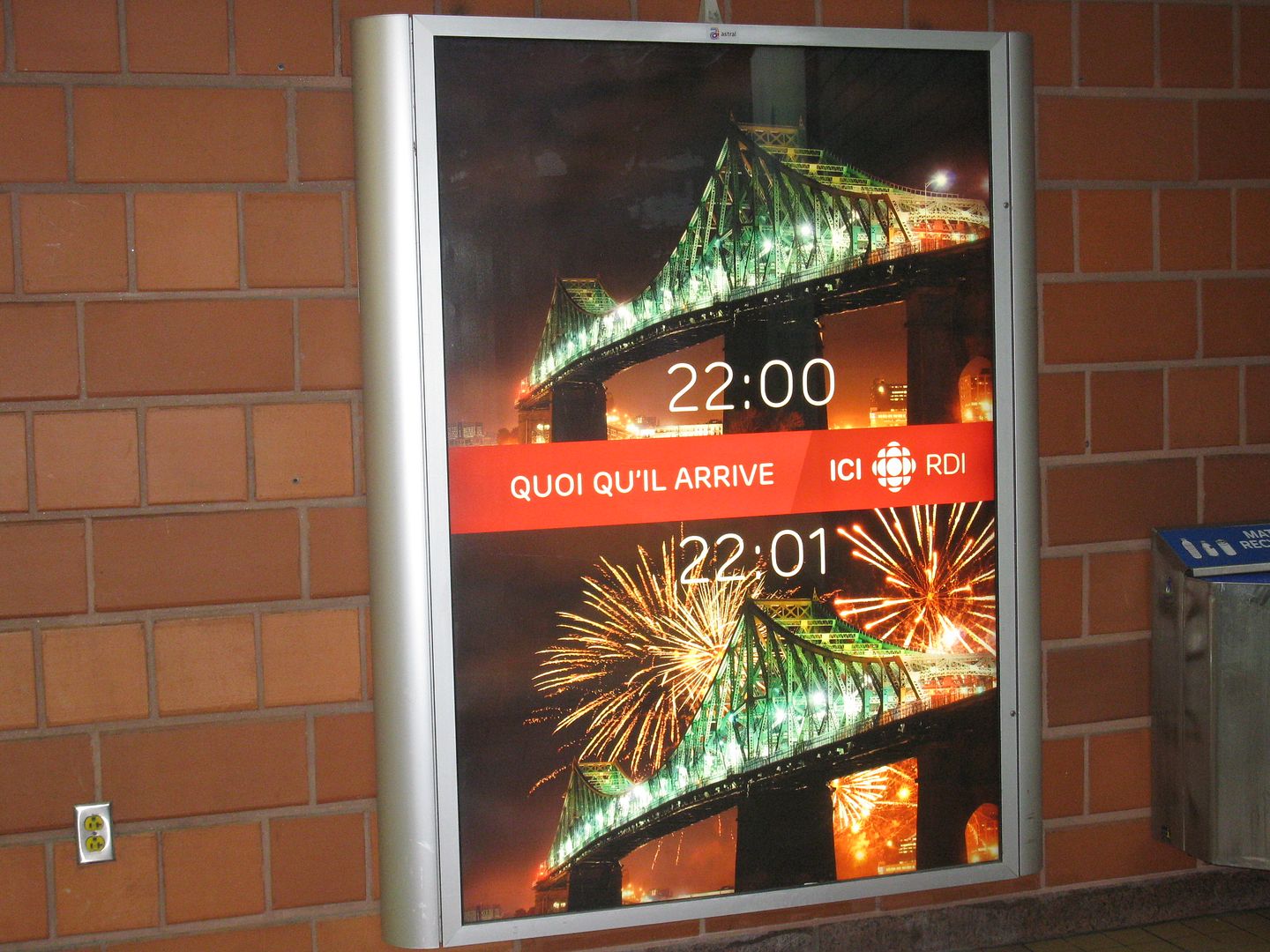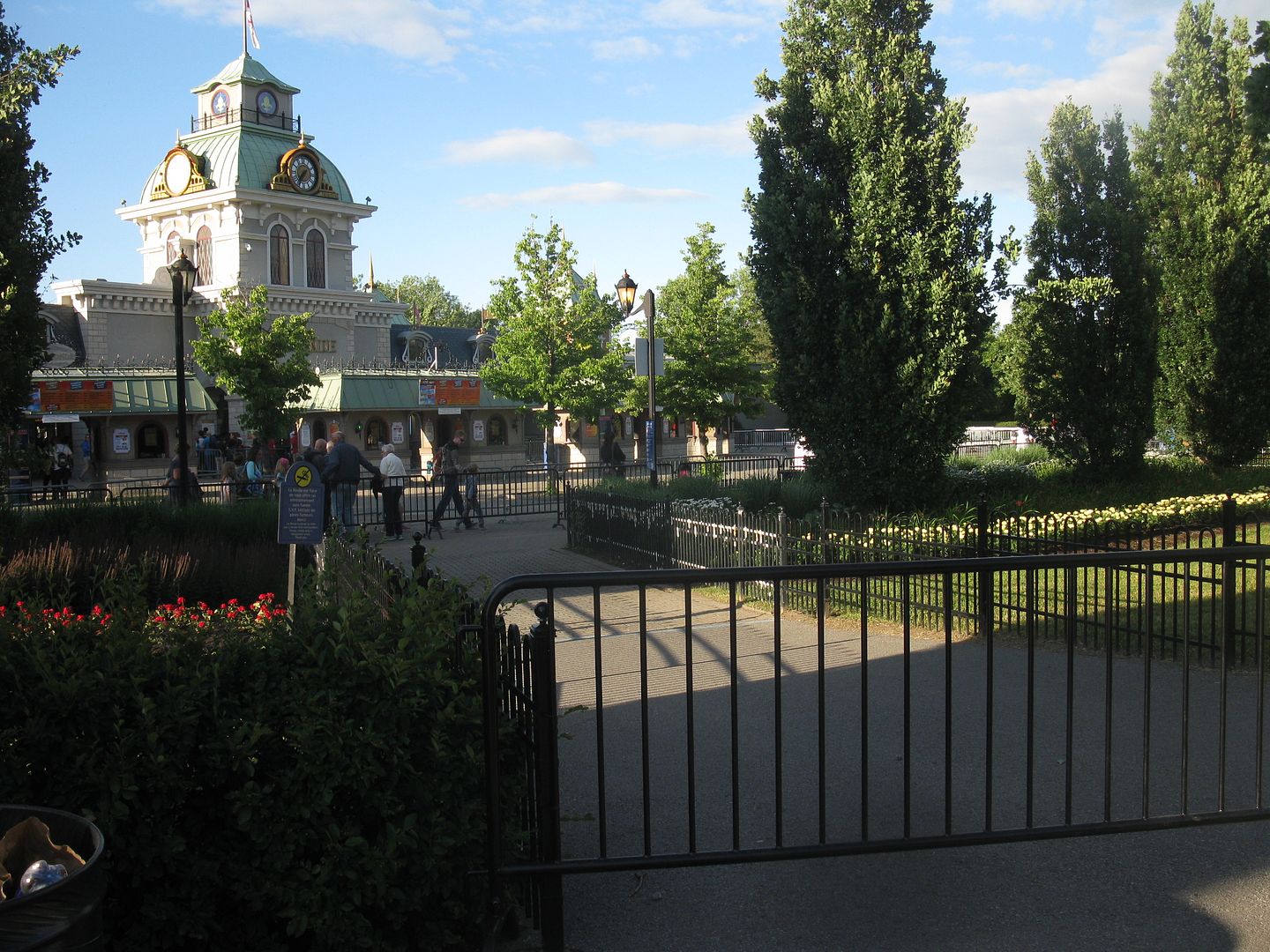The opening night of the 32nd season of the Montreal International Fireworks Competition began with a
very good display performed by a Canadian “recruit,” Apogée, in front of a larger audience than I expected, thanks to clearer, dryer, and less windy weather conditions than early in the day. With an inaugural display on July 2nd, it was the latest kick-off. That is a long-term trend in the schedule strategy, with hope to attract larger crowds as soon as the competition begins. It was nonetheless a cold night for early July and we smelled the smoke for 30 minutes owing to the westerlies.
The theme
Our Heroes emphasized characters of famous movies and video games. That was a more distant connection to the Canadian Armed Forces than the 2015 tribute. Indeed, for a second year in a row, La Ronde partnered with the Canadian Armed Forces and the opening show was part of a larger event celebrating the military institution and those who serve within the army. In a society where many people have negative or conflicting attitudes toward the army, it was odd to see a parade of four tanks as I arrived by the main entrance, and to hear a fighter aircraft above the midway. This ambivalence is illustrated by a rare piece of media coverage, which emphasized this issue instead of the fireworks show itself (
see here ). Other than that, I have not seen a lot of media coverage, in opposition with the suggestion made by this ad of a Canadian all-news channel which promotes its capacity to be live on the breaking news with pictures from various events, including my favorite summer festival.

The Royal 22nd Regiment designed and recorded the soundtrack of this off-competition opening display. Having an orchestra to perform the musics is potentially a very interesting idea as it leads to different interpretations of famous pieces, some of them having been heard several times in fireworks shows. For instance, the performance of
I Just Can’t Wait to Be King was very different than the original soundtrack. However, as it was clearly stated in
Mylène’s interview with the fireworks designer, Alain Carbonneau, the tasks have been fragmented between the Royal 22nd Regiment, which crafted the soundtrack on its side, and Apogée, which was ordered to tailor a pyro extravangaza on this theme. I am sure that the soundtrack wouldn’t have been edited in the same way whether a senior pyromusical designer as Carbonneau was involved in the process. The segment on the music of
The Legend of Zelda, for instance, could have been shorten.
A set of angled candles shooting blue stars prematurely came into life about 30 seconds before the end of the authoritative countdown imperturbably pronounced by Michel Lacroix, and the sequence of Ferris Wheel lights which were turned off. Then, the show properly began as the fireworks powerfully awakened on the music of
Star Wars, whose success at the box office over the last year is indisputable. That was a climactic beginning. The music for the finale (
Pirates of the Caribbean) was also a great choice, with an accumulation of gold comets, shells of yellow stars, and flights of salutes.
The pyromusical design and technical design were good and creative. The lake was the stage for nautical flares, rotative fountains, and shells, as well as candles shooting stars over the water from the third ramp. The
Harry Potter segment was very nice, with swinging sticks and brooms (similar to the sticks, with a small fountain effect at the lower end), as well as a short but beautiful sequence of 5 or 6 sets made of nautical mines, erupting from the left to the right side of the lake. I am not familiar with
Mario Bros but I suspected that some shapes alluded to the famous video game as I saw smiles on the face of people around me. That is confirmed by above Ryguy2008’s post. Nonetheless, the design could have been a bit more sophisticated and polished. Several devices overlapped the following segments, like the water falls which lit up during
The Legend of Zelda, the candles of bombettes which began during the
Symphonic Marches, and some flares which started for the
Superman March.
My attention has been catched, during the penultimate segment (or the previous one), by rare whistling comets which decelerated close to a complete stop, then gained some traction and rose again (similarly to double-ascension girandolas). Other than that, we saw a good range of effects, but not as wide as in many other shows. The choice of colours was purposeful in some segments (red and blue effects on the music of
Superman, more colours during the Lion King theme), but not as diverse as in many displays. The synchronization was good and note-synchronized on some segments (e.g., the percussion from
Rocky), but more “atmospheric” in most parts.
The audience briefly applauded and didn’t stand after the show, so I am not sure that people were so enthusiastic about the performance. Generally speaking, I would say that it was a very good debut display from Apogée, which didn’t have an easy task given the pre-made soundtrack and, also, the lack of human resources around the Canada Day. For many years, I was told that the competition schedule must take into consideration the national celebrations (e.g., American and French teams are not available around July 4th and July 14th). So it was certainly not a convenient timing for BEM and Apogée who did these shows in 2015 and 2016.

Early, we saw the standard protocol for an opening display. Master of ceremony, Michel Lacroix, welcomed the audience, introduced the event, the sponsors (including the newest one, Tim Hortons) and the line-up of contestants. Sophie Émond, director of La Ronde operations and security, who presumably stood in for general manager Phil Liggett, did a very short speech. She was followed by the competition director, Martyne Gagnon, who read the same speech than one year ago, with only slight revisions and updates*. In opposition to 2015, there was neither reference to the Canadian Armed Forces, nor speech from its representative. Michel Lacroix finally introduced the theme of the show and the 9 Apogée team members.
---
Metal detectors become standard in the mass entertainment industry these days and La Ronde doesn’t escape to this trend. People who attend fireworks displays on site should plan extra time to enter into the park. The process was somewhat chaotic when I arrived last night.

First of all, whereas multiple pathways used to lead to the main entrance, there are all blocked but the one at the far left of the entrance plaza. An employee then dispatch people between various queue lines which lead to a series of metal detector stations. Arriving at 7pm, I waited about 15 minutes and three metal detector stations were dedicated to our line. The line wasn’t long, so I can’t imagine how long the wait can be when all the queue space is filled during peak times. Once your bags have been checked and you have walked through the detector, you then proceed to the turnstiles with your ticket or season pass. Employees were very polite, but the whole process is a severe change from the former “free style” procedure.
---
All that being said, it was a very good show and a pleasant night. Now, let’s the competition begins with the Chilean (or Spanish?) entrant.
Fred
*That is a very effective process, sometimes used by the author of this post, as readers can see by comparing this opening review with the
one I posted one year ago!

